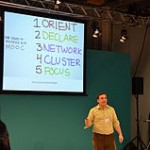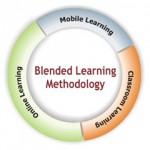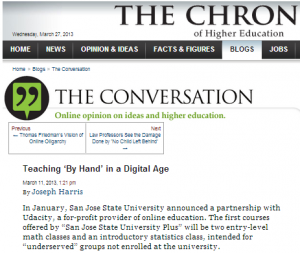In reading Robert Talbert’s blog post about a study that appears in the Journal of Engineering Education, I realized that answering this question really requires us to talk first about what problems the screencasts are meant to address. In the study he discusses, there were two types of screencasts: homework solution screencasts, where the professor worked out solutions to homework problems step by step, and screencasts that addressed a topic students indicated at the end of a class session that they had trouble understanding.
I suspect most of us, when we think about screencasts, think more about the former type – working through a problem step-by-step. Yet the idea of creating a just-in-time screencast to address a specific problem in understanding that the students themselves have identified intrigues me. It would be more challenging to develop, because it couldn’t be prepared ahead of time, but it might have a significant impact on student learning.
So what did the study find? The researchers reported that “students who use the screencasts more and perceive them to have increased their understanding of the course material actually demonstrate increased competence in terms of higher performance. This is particularly true for students seeing the concepts for the first time.”
Read Robert Talbert’s full blog post here and the complete study here.






